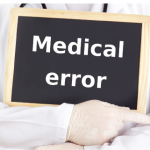In a December 2019 editorial in the Journal of the American Medical Association, the implications of diagnostic error were explored through the story of two parents, both medical professionals, who sought a diagnosis for their sick child.1 Their son saw specialist after specialist and underwent repeated procedures, but for years was left without an explanation for or alleviation of his symptoms. Eventually, he was diagnosed with celiac disease.
One of the author’s main critiques is that the myriad metrics tracked and reported in U.S. healthcare don’t capture what really brought value: the boy’s ability to live his best life.
Incorrect and delayed diagnosis led to the boy’s years of suffering; what if those missed opportunities could be captured, learning opportunities created and root causes analyzed? Such instances of diagnostic error are increasingly recognized as being measurable and preventable.
Diagnostic Art
Making the wrong diagnosis or missing the correct one is something that has likely gnawed at most clinicians at some point, particularly in such a heavily cognitive field as rheumatology. Errors and missed diagnoses are often hard to admit. “How could I have missed that?” you may ask yourself.
Or perhaps you are the one to make the correct diagnosis, fitting together the pieces others overlooked.
If we are to improve as diagnosticians, it is imperative that we understand how it is that we reveal what ails our patients in the first place. We often fail to recognize all the moving pieces that must work in harmony for us to arrive at the correct conclusion:
- Care team members must gather, interpret and synthesize information as diseases evolve over time, all while intrinsic and extrinsic factors affect our decision making.
- Intrinsic factors include the knowledge and experience providers possess to interpret information, and both cognitive and personal biases.
- Examples of external factors include an imaging study ordered or interpreted incorrectly, altering one’s working diagnosis, or a distracting environment that leads to a missed piece of information.
Each step in the process, from the initial gathering of information to the final communication of a diagnosis, represents opportunities for errors.
Quality Improvement
Diagnostic error has become more prevalent in the national patient safety conversation. In 2015, the National Academy of Medicine (NAM), formerly the Institute of Medicine (IOM), published Improving Diagnosis in Health Care. This publication, a continuation of the IOM’s previous reports, To Err Is Human and Crossing the Quality Chasm, builds on the foundations of the modern patient safety movement. In it, NAM defines diagnostic error as the failure to “a) establish an accurate and timely explanation of the patient’s health problem(s), or b) communicate that explanation to the patient.”2
Although measuring the incidence of diagnostic error is challenging, the data we have suggest diagnostic errors are prevalent. Singh et al. estimated 12 million Americans are affected by diagnostic error each year in the ambulatory setting alone.3 The NAM report claims almost all Americans will experience a diagnostic error at some point.2 With such a pervasive problem, it is paramount that we better understand why lapses in the diagnostic process occur and the challenges in addressing them.
William Edwards Deming, one of the founders of the quality improvement movement, said, “Without data, you’re just another person with an opinion.”


